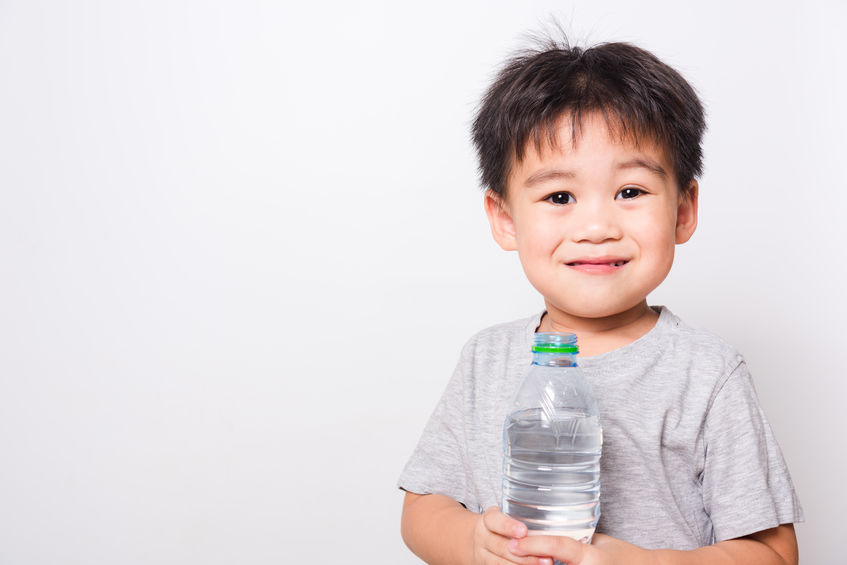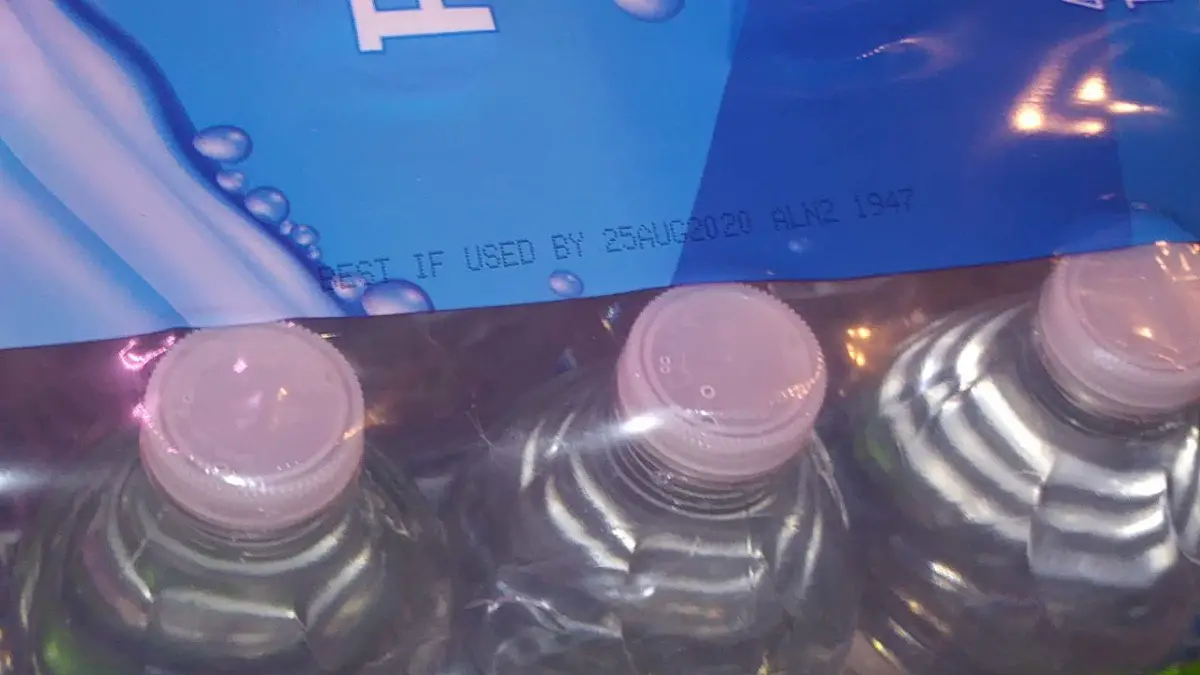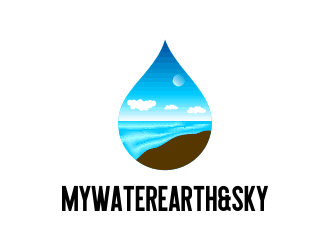According to FDA, Bottled H2O’s are safe to drink for at least 2 years if:
- Kept in the dated heavy Protective Package
- Store in a cool, dark place
- Away from products with strong chemical odors
- Void of exposure to the sun
- Never stored on the ground
- Has an NSF/IBWA Logo on a bottle
- Rotated by date on a regular basis
Our Country is the Greatest Country in the world for a lot of reasons Emergency Preparedness is just one of a few that we lead the rest of the world in. I learned so much in my journey to answer this question. Why were there dates on top of the Bottled Water cases that I was buying?
Read on and learn what I learned.
Who Regulates Bottled Water
Bottlers use standard identifiers prescribed by FDA regulations to describe the water. These terms are geographical terms of the water and the treatment methods applied to the water. For instance “Springwater source” that Deer Park uses is geographical. Other terms like Glacier Water or Mountain Water are not regulated standards of identity, and may not be what they say it is.
Also Purified may not be what the manufacturers say it is. According to FDA Purified may or may not be free of microbes as it implies.
Purified water is free of all chemicals and it must not contain more than 10 PPM of dissolved solids and must also be free of microbes.
Bottled Water must be tested before it’s sold in the US. FDA says that Groundwater is less vulnerable to being contaminated than Surface-water although there is a chance that it can be contaminated by Nitrate, Arsenic, Radioactive elements, human waste from a septic system, or some Industrial waste.
They also go on to say that some Bottled water comes from Surface water which is the type of water that usually comes from a Public water system.
This water is taken, filtered, and chlorinated- then bottled for sale and consumption. They go on to say that water taken from protected Groundwater is less likely to be contaminated but there is no guarantee the Protected Groundwater is not contaminated.
The best way to really know if your Bottled water is contaminated is to call the Bottler and ask them if the water is free of the contaminate that you are concerned about. And whether the water has been treated to remove those contaminates from their last test results. The same with fluoride.
If you are concerned with Fluoride in your favorite Bottled water you can contact them and ask them if their water has Fluoride in it.
There is naturally occurring Fluoride in all water sources and from what I read EPA has recently asked all Bottling companies to stop adding Fluoride to their product.
EPA and FDA both don’t certify Bottled Water. There are independent third parties that do. IBWA is one of those parties that represent the water bottlers here in the US.
To be a member, the organization will test your product once a year. Also if you are a member there is a logo that is found on the label of your bottle for everyone to see.
In the United States, The FDA requires Bottled Water Companies to comply with Current Good Manufacturing Practices which include regular testing to verify the products exceed regulated contamination levels. However, the FDA doesn’t require the Bottlers to have independent audits or product quality testing by a third party.
Because NFS is not a Regulatory Agency. NSF’s Certification is strictly voluntary. Participation in the Certification Program by the bottled Water Companies demonstrates their commitment to producing quality products.
So you would think that a Bottled Water Company would want to be Certified for professionalism Wouldn’t You?
Watch this Interesting Video called ‘The Inner Working of a Bottled Water Plant’
NSF International is another organization that gives certification to Bottlers in the industry by giving unannounced annual additional testing. This logo is also on the label of the bottle you are drinking from for all to see. If you do not see the label, they are not a member. Look for the labels.
Ozone is a disinfectant used and preferred by Bottled Water Manufacturers because it does not leave behind a taste like Chlorine and Bottlers don’t have to worry about maintaining a residual in water that is sealed in a container.
They might not be about the residual but FEMA and Homeland Security may be. Manufacturers, regulators, and consumers look to NSF International for the development of public health standards and certification programs that help protect the world’s food, water, consumer products, and the environment. 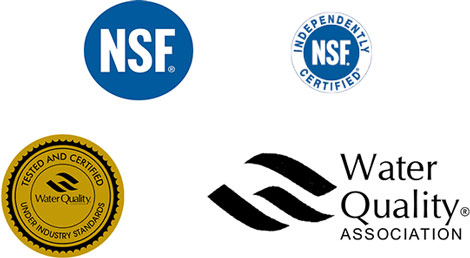
WQA’s Certified Product Listings are available to help connect consumers with water treatment products that have been tested and certified to industry standards.
WQA maintains a complete listing of all products and components that have earned the Gold Seal Product Search and Sustainability Certification Marks.
Only products that pass the rigorous testing requirements of industry standards, pass annual manufacturing facility audits and comply with WQA’s Certification Schemes can be found in this listing.
According to the Industry, nothing has changed other than the fact that Bottled Water can be stored over periods of time as in Emergency Preparedness during Hurricanes and Floods more safely in the dated packaging.
It is safer for consumers to keep the water sealed longer and kept in heavy plastic cases. These incidences are starting to help at more alarming rates with the cases of water being one of the most important and key
The Bottled Water Water, if kept in the dated package, has a better chance of being safer than say the same case of Water where the Bottles of Water are loose and the water was not stored properly and protected from other elements.
Emergency Preparedness Water
According to FEMA, a normally active person needs to drink 2 quarts or a half-gallon of water per/day. In the event of an unforeseen emergency, a person needs about one gallon per person each day and 2 week supply for drinking, cooking, and hygiene which is pretty much what all these governmental agencies are recommending.
To prepare the most safest and most reliable emergency supply of water. FEMA recommends that you purchase a supply of Commercial Bottled Water and do not open it until you are ready to use it. Store the bottles of water in the original sealed containers and Observe the expiration and USE BY DATE.
FEMA also recommends that if you are using Tap water for an emergency supply that comes from a municipality where the water is chlorinated in the treatment, then you won’t need anything else to keep it clean.
Close the bottle and store it.
If you are using an emergency supply that doesn’t use chlorine than you should add a teaspoon of household bleach to the gallon bottle seal the bottle and then store. Write the date on the outside of the container and store it in a cool dry place.
- Most preppers agree that the best water to store for emergencies is Tap water because it has been pre-treated with Chlorine.
- Since Bottled water doesn’t use chlorine they don’t recognize it for long storage
- There are water conditioners that you can use if you have stored the water for a long period of time.
- You can also add household bleach before you were to drink it to ensure any bacteria that found a home in your water supply is killed off.
- Water filters especially Gravity filters are made to run off-grid and will remove anything that is undesirable. If you are concerned about any type of contaminant buy a Water Filter.
Does Bottled Drinking Water Have a Shelf Life
The production and industry of Bottled Water are overseen and regulated by the FDA or the Food and Drug Administration. They are Ultimately in charge of Compliance and Verification of the Industry.
The FDA uses the Standards, Practices, and Procedures of the EPA or the Environmental Protection Agency for Parameters of the final product which is Drinking Water to show quality control. They outline the sampling and testing procedures and implement them in the Bottled Water Company. Testing for Microbiological contaminants is tested once per/week. Radiological and Chemical Contaminants are tested once a year.
The FDA can disagree with some of these parameters that the EPA uses as the Standard Methods. and can disregard them if they feel they need to. The States are in charge of Enforcing the State Bottled Water Regulations. They inspect the facilities and the Bottle Water Source and the production facilities in their home state.
In some cases, the State can pull bottles for samples from retail shelves for routine compliance checks or complaints from consumers. They can also run an analysis of bottled water for routine independent verification of compliance.
- The EPA and the FDA don’t certify Bottled Water a third party does. The NSF a third-party volunteer certification group does and in certain situations, the State will.
- The FDA says Water does not have a Shelf Life. But It mandates and prints an Expiration Date on the Bottled Water and its packaging.
- FEMA recommends buying Commercial Bottled Water, using and Observing the Expiration Date that comes on the package or container.
- Homeland Security and Preppers agree to store Tap water that has been chlorinated in Food Grade containers Pre-packaged Commercial Bottled water should be rotated every year.
- They say to Check the pull date on the container before you buy it to ensure it has not been sitting on the SHELF for a year.
- Self serves bottled water should be rotated out because Ozone instead of Chlorine was most likely used to disinfect it.
- Ozone is good for taste but won’t last in an emergency situation
According to the FDA, the main difference between Bottled Water and Tap Water is the way the water is disinfected. Municipal Water treatment uses Chlorine or chloramine. Bottle Water treatment typically uses Ozone and other technologies like Chlorine Dioxide or Ultraviolet Light This improves taste and kills all bacteria. It also lasts a long time as long as the Bottled Water must be packaged properly and more importantly, store properly. The packaging should last as long as 2 years.
Bottled Water Regulations
People choose Bottled water for a variety of reasons some for taste health concerns and mainly as a substitute for other beverages like soda. The Standards are set by the Food and Drug Administration but the FDA bases its Standards on the Standards set for Tap Water that are established by EPA which is the Environmental Administration. Kind of Confusing.
EPA always encourages people to learn about the quality of water either from their Tap or Bottled Water, which The FDA regulates as packaged food under the Federal Food Drug and Cosmetic Act. If your main water supply is your Municipal Water Company then that’s easy enough to get information on the condition of your drinking water.
Your water supplier by law sends that information to you once a year. It’s called The Annual Water Quality Report. If your water comes from a household Well then they recommend that you have your Well water tested regularly for Bacteria Nitrates and other Contaminants.
Checking the Test results for Bottled Water may be a little harder to do. EPA and FDA recommend that you call them and ask them for their parameter test results. According to the IBWA the differences between the regulation of Tap water and Bottle water though minimal, highlight the differences between drinking water delivered from a public water system and drinking water delivered to the consumer in a sealed container.
I am drinking a bottle of Deer Park right now. Their address and website were on the label. You can question them on any concern you have on any topic and they will respond to you. So I decided to look them up at Deer Park Bottled water.com I got this information from their website.
Here is what I found out:
- Bottled Drinking Water Source is from a Spring that is in various locations according to the bottle. In Stroudsburg Tripoli and Bangor Pennsylvania. My bottle of water contains a shelf date that says 5/31/2020. Its label says that it’s a product of the Nestle Corporation and it gives a website and phone number for details on Water Quality and other questions.
- On their website, they list their source as a Primary Spring from different locations in Penna.
- Their Primary Distilled water source (which is another product ) is from a Public water supplier or On-site well.
- The Final Treatment process for the Spring Water Source is
- A storage Silo holding filtered source water
- Microfiltration
- Ultraviolet and/or Ozone disinfection
- Bottling.
They warn that drinking water and bottled drinking water may be reasonably expected to contain at least a small amount of contaminants. Deer Park then lists the Primary contaminants with the EPA & the FDA
Parameters along with the Secondary set of Parameters that you would normally expect to find from your Municipal water Suppliers. The list is from the 2017 Test Results. Deer Park’s answer to the question of my article, Does Bottled Drinking Water Have a Shelf Life? is “Unlike Fish Eggs and some houseguests,
Bottled Water doesn’t go bad. We do have a Best Buy date that is stamped on the bottle to indicate when it may start to lose its taste.”
“Just look for the letters BB 1 inch below the label (this is where I found the date on my bottle of Deer Park) and depending on where your BPA bottle was made, the date to the right of those letters will tell you when the Bottled water may start to lose its freshwater.”
The Picture Below is the Date on the Deer Park Packaging outside on a case. Best if used by Aug 25, 2020, Bisphenol A, known as BPA, is a chemical found in disposable water bottles and bottles of many kinds. During the shipping process, this chemical can break down as the bottles are exposed to high heat during transportation, causing it to seep into the water you’re about to drink.
FDA Bottled Water Regulations
Source Water
Source and Finished Water bottles are tested on a weekly basis for Total Coliform.
If Found the Bottlers must continue to test until the Total coliform is rectified. They must Eliminate the source of contaminants before they are able to use the source again.
When will a source that is previously found to contain E. coli be considered negative for E. coli?
The source will be considered negative for E. coli after five samples collected over a 24-hour period from the same sampling site that the tested positive for E. coli are tested and found to be E. coli negative. from FDA
Finished bottled water
Bottlers here in the US must take and analyze at least once a week for total coliform a representative sample from a batch or segment of a continuous production run for each type of bottled drinking water produced during a day’s production.
The representative sample shall consist of primary containers of product or unit packages of the product. If any coliform organisms are detected, follow-up testing must be conducted to determine whether any of the coliform organisms are E. Coliform Bacteria.
What is the standard of microbiological quality established by the FDA for E. coli in bottled water? Bottled water containing a substance at a level considered injurious to health under section 402(a)(1) of the FD&C Act, or that consists in whole or in part of any filthy, putrid, or decomposed substance, or that is otherwise unfit for food under section 402(a)(3) of the FD&C Act is deemed to be adulterated.
If E. coli is present in bottled water, then the bottled water will be deemed adulterated
What is Adulterated food?
Adulterated food is impure, unsafe, or unwholesome food. In the United States, the Food and Drug Administration (FDA), regulates and enforces laws on food safety as well as Food Defense after the Food Safety and Modernization Act was passed in 2011. The FDA provides some technical definitions of adulterated food in various United States laws.
FDA with cooperation from EPA also tests for:
- Minerals such as chloride, Iron, and Zinc
- Fluoride
- Inorganic Substances- such as Arsenic, Cyanide, and Lead
- VOC’s-Volatile Organic Chemicals
- SOC’s-Synthetic Organic Chemicals
All States Regulate Bottled Water Sources
The FDA relies on the States to approve Bottled Water Sources. In addition to this state’s approval jurisdiction, States have also established and enforced their own rules and regulation for Bottled Water. All 50 states regulate bottled water within their state.
Twenty-three states also regulate out-of-state bottlers. Requiring out-of-state manufacturers to provide documentation demonstrating compliance with state requirements and obtain a license and registration or other approval prior to distributing the product.
How Long Does Bottled Water Last Unopened
According to the IBWA–The International Bottled Water Association, Emergency Preparedness Guidelines that are issued by the Department of Homeland Security say that they recommend that every household maintain an Emergency Supply of Drinking Water.
How Long Do you have to Boil Water to Purify It?
Boiling 1 min. will kill bacteria & viruses
- If H2O is cloudy, filter through a paper towel or coffee filter
- Bring H2O to a rolling boil
- At altitudes of 5,000 ft.+ boil H2O for 3 min.
- Let H2O cool
- Store it in a clean container
- Improve the taste of H2O-add 1 pinch of salt to each liter of H2O .…………………………………………………………. Read more
What is the Best Way to filter Well Water?
Use a Whole House Water Filtration system that contains:
- Pre-Filter Sediment Removal
- Water Softener
- Carbon Filter (kills Bacteria)
- Pre-micro-sediment
- Reverse Osmosis-(Dissolved Contaminants to .01 microns in size)
- Polishing-Coconut Fiber-UV treatment (kills Virus & Cyst)
- Minerals-added that were stripped .……………………………………………………………………………………….. Read more
At least 1 gallon of water for each person living in the household per/day for drinking, cooking, and personal hygiene.
The IBWA recommends that consumers should store Bottled Water at room temperature or cooler. Out of direct sunlight and away from any solvents such as gasoline or paint thinner, household chemicals, and cleaners.
When Bottled or Tap Water is exposed to direct sunlight or heat algae or mold may develop. They say they are overly concerned about this affecting the general health of consumers if you store the water this way there shouldn’t be any concern.
Bottled Water is packaged in highly sanitary and protective sealed plastic containers. This sealed plastic is slightly permeable that which may allow ambient gasses and vapors from household solvents, petroleum-based fuels, and other chemicals to affect the odor and taste of your drinking water. Proper storage will ensure the quality of the product.
The US Food and Drug Administration which regulates Bottled Water as a packaged Food has determined that there is NO Shelf Life and NO Limit for how long you can store the water.
The FDA requires a NO expiration date for Bottled Water.
Because:
- It is packaged under sanitary, good manufacturing practices.
- The water is in a sanitary sealed container.
- The water does not contain substances like sugar or proteins that are typically associated with food spoilage. Because of these things, Bottled Water can be stored for extended periods of time with no concerns.
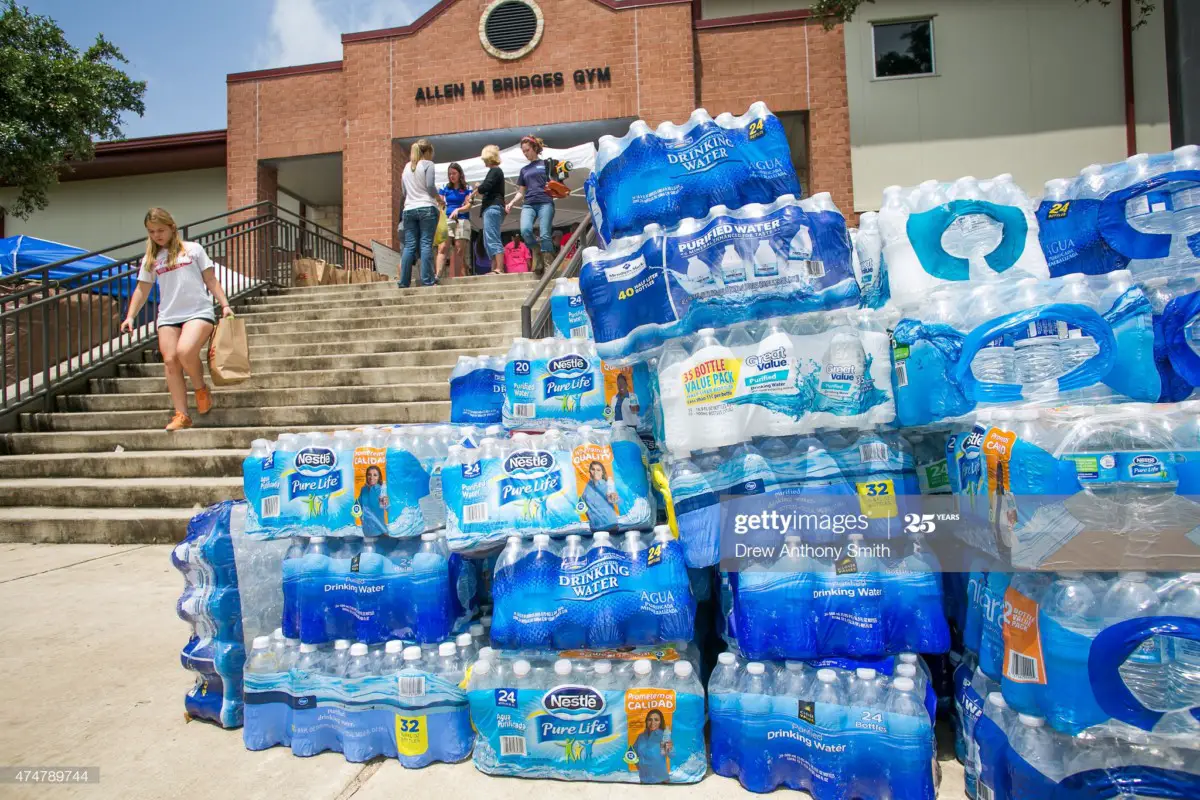 Bottled Water is an excellent choice for emergency water storage. The FDA and the Good Management Practices (GMPs) mandate that Bottle Water be produced in a sanitary environment and bottled in sanitary safety-sealed containers.
Bottled Water is an excellent choice for emergency water storage. The FDA and the Good Management Practices (GMPs) mandate that Bottle Water be produced in a sanitary environment and bottled in sanitary safety-sealed containers.
WIMBERLEY, TX – MAY 26: Cases of bottled water are stacked up in front of Wimberley High School, where faculty and volunteers assembled to aid in flood relief efforts on May 26, 2015, in Wimberley, Texas.
Central Texas has been hit with severe weather, including catastrophic flooding and tornadoes over the past several days.
These programs that are overseen by the FDA ensure the consistency of quality, State, and Industry Standards along with good taste delivered to the consumers.
Bottle Water plays a needed role in our country’s recovery from disasters that have been plaguing us for a long while.
Dating helps stores and State & Government agencies keep track of Bottled water so they can replace what may be older and has run through the system. Older FDA means that the packaging is up to 2 years old.
Over that age, the packaging starts to break down and the water can become unsealed and less sanitary because cases of Bottled Water come in plastic bottles and are wrapped in plastic.
There will always be questions and suspicions, but the date on the packaging was put there not for the quality of the water put the condition of the packaging in order to protect the Bottled water inside. Next time you buy a case of Bottled Water check the dates on the top of the case and buy a case within the date they recommend.
How Good is the Renogy Tactical Compared to the Katadyn Pocket Water Filter?
Katadyn Pocket Filter
More Capacity
A Sediment Filter
Processed Output
Uses a Silver coated media
A Cleanable Filter
Renogy Tactical Microfilter:
Price 100’s of dollars cheaper
Renogy uses a 0.1 Micron size which is the smallest used today
Inexpensive Filter Replacement $10.00
Durable Aluminum Construction ..…………………………………………………………………………………………….. Read more
JimGalloway Author/Editor
References:

